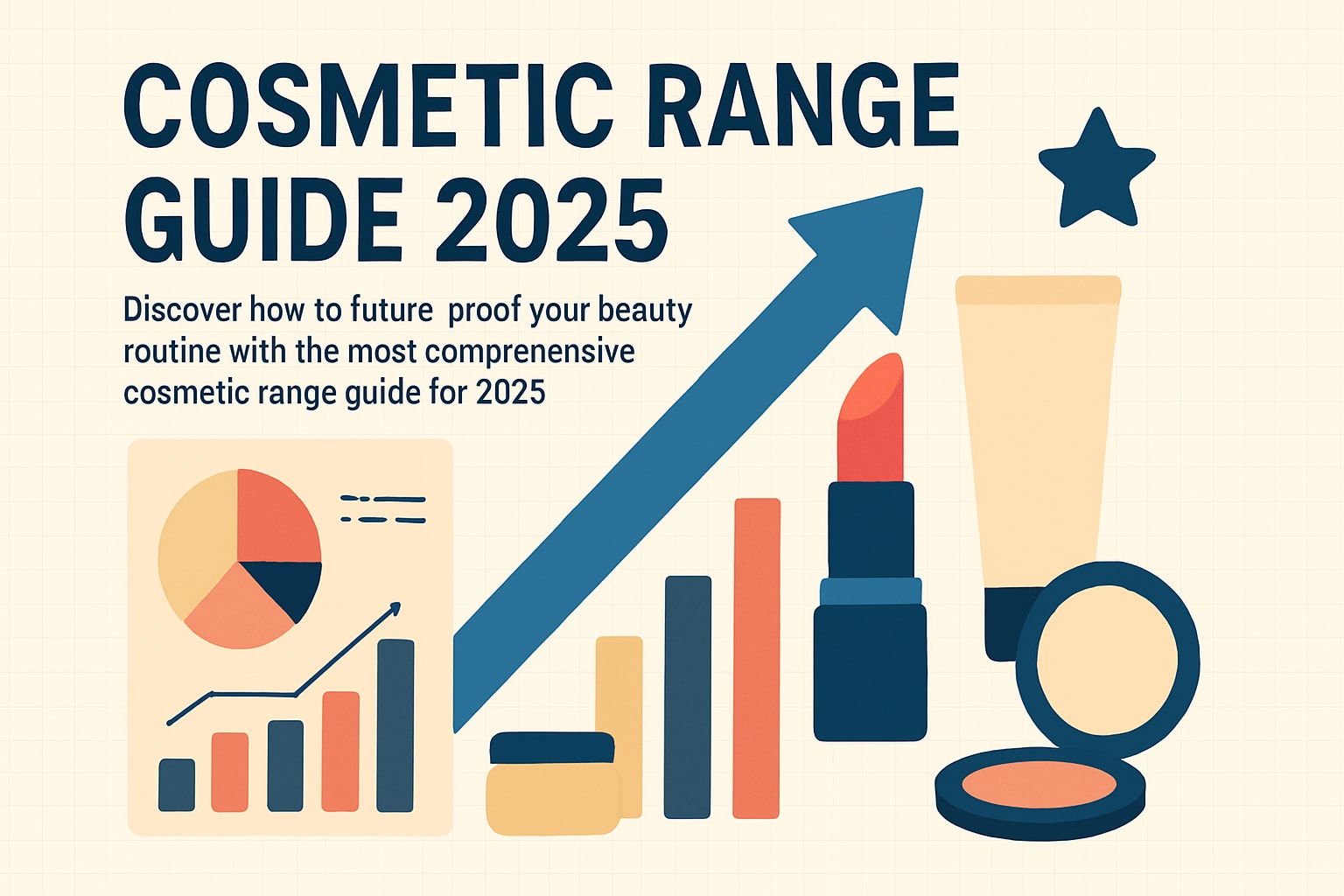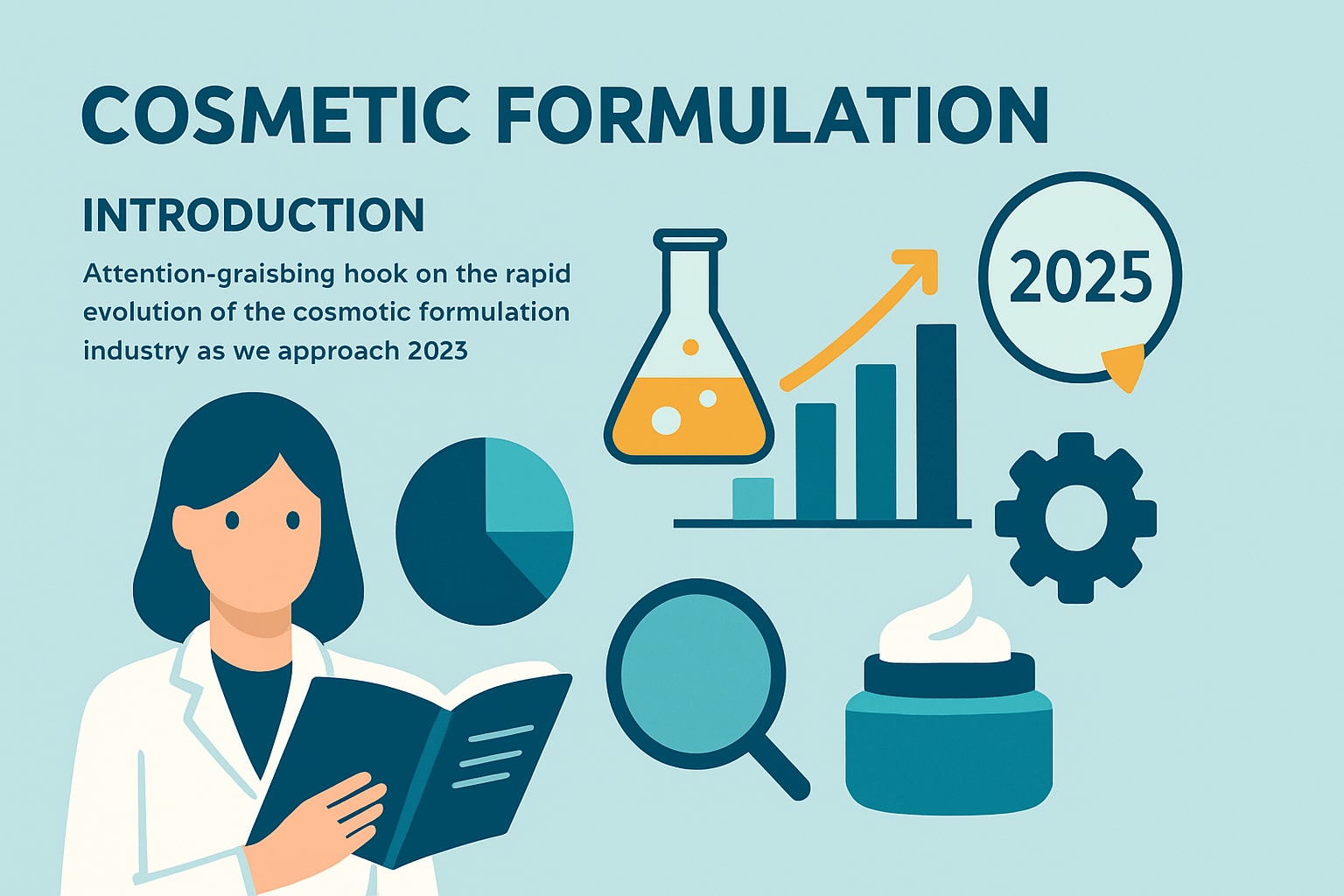The cosmetics industry is transforming rapidly as innovation, safety, and sustainability become top priorities for both brands and consumers. Staying ahead in cosmetic product development is essential to remain competitive in 2025, with evolving expectations pushing the industry to new heights.
Emerging trends are reshaping everything from product formulation to packaging and marketing strategies. Both new and established brands must adapt quickly to keep pace with these evolving demands.
In this article, we will explore the 8 key trends set to define cosmetic product development in 2025. Expect actionable insights and real-world examples to help your brand lead the way in this dynamic landscape.
The Evolving Consumer Landscape
The landscape of cosmetic product development is transforming rapidly as consumer expectations evolve. From shifting demographics to heightened demands for safety, personalization, and sustainability, brands must keep pace with these changes to thrive in 2025.
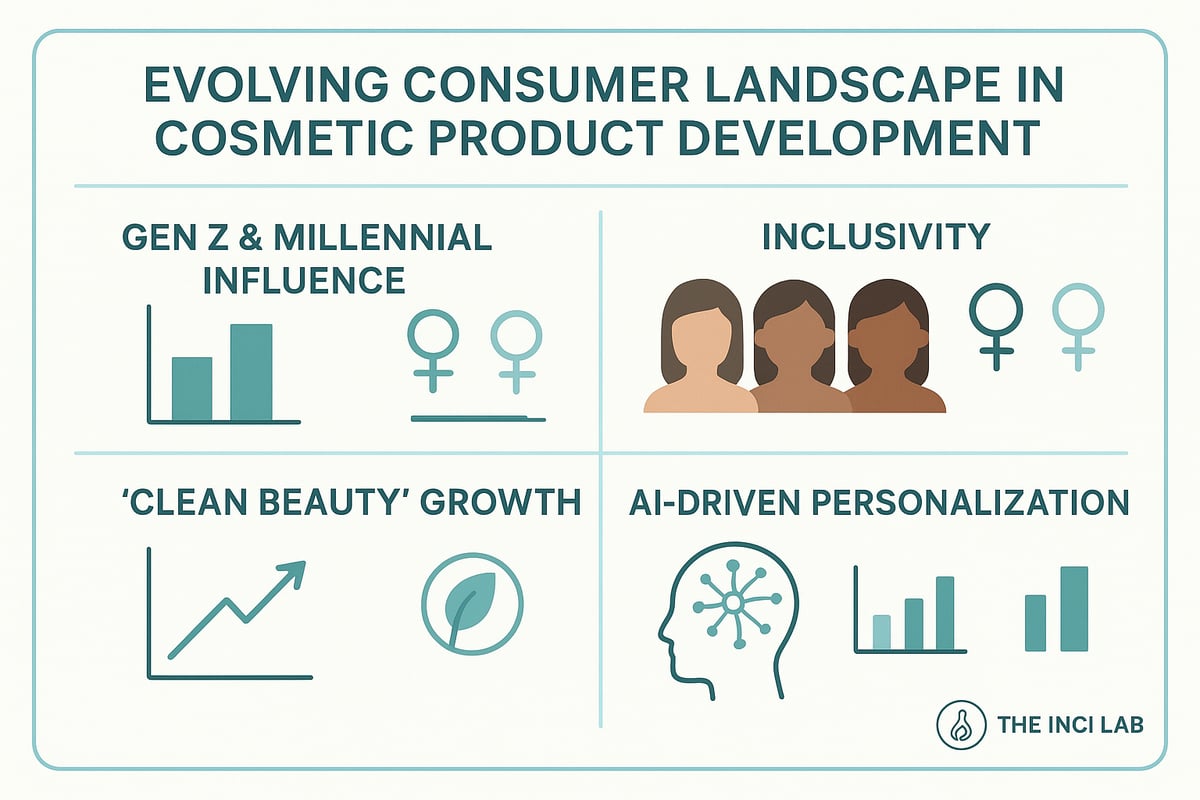
Shifting Demographics and Preferences
New generations are setting the pace for cosmetic product development. Gen Z and Millennials are now the primary drivers of market expectations, demanding greater inclusivity in shade ranges and product offerings. This demographic shift is also fueling growth in male grooming and gender-neutral cosmetics.
Social media platforms and influencer culture are amplifying these trends. Real-time feedback and viral moments can transform niche products into mainstream must-haves. A notable example is Fenty Beauty, which disrupted the market with its extensive shade range, highlighting the importance of inclusivity in product lines.
- Gen Z/Millennials prioritize values and authenticity
- Inclusive shade ranges are now a baseline expectation
- Social media accelerates trend adoption and feedback
To remain competitive, brands must adapt their cosmetic product development strategies to align with these evolving preferences. For a deeper dive into these shifts, explore 2025 cosmetic industry trends.
Health, Wellness, and Safety Priorities
Consumers are prioritizing skin health and ingredient transparency in cosmetic product development. There is a growing demand for "free-from" and hypoallergenic formulations as shoppers become more cautious about potentially harmful chemicals.
According to recent data, 92 percent of consumers prefer brands that demonstrate environmental and social responsibility. This trend is visible in the surge of "clean beauty" products and the popularity of EWG-verified offerings.
- Focus on ingredient safety and transparency
- Rise in "free-from" claims and certifications
- Environmental and ethical considerations drive choices
Brands that proactively address these wellness and safety priorities are better positioned to build lasting trust and loyalty in the market.
Personalization and Customization
Personalization is now a cornerstone of cosmetic product development. AI-powered skin analysis tools and personalized recommendations are making it easier for consumers to find products tailored to their unique needs.
Bespoke formulations address individual skin types, concerns, and preferences. Tech-driven product matching and virtual try-ons are becoming standard, enhancing the consumer experience and boosting satisfaction.
- AI analyzes skin and recommends products
- Customized regimens based on user data
- Virtual try-ons bridge the gap between digital and physical retail
Brands offering these personalized solutions are setting new benchmarks for engagement and innovation in cosmetic product development.
Data-Driven Risk Management
The integration of scientific data visualization and digital tools is strengthening risk management in cosmetic product development. Enhanced safety protocols now extend from R&D through to production, ensuring comprehensive oversight.
Ingredient databases help identify hazards and support compliance with global regulations. Real-time tracking allows for transparent sourcing and testing, reducing risks and bolstering consumer confidence.
- Visualization tools for proactive risk assessment
- Ingredient tracking ensures quality and compliance
- Data-driven processes streamline safety protocols
This data-centric approach not only protects consumers but also accelerates innovation and regulatory approval.
The INCI Lab: Innovating in Custom Formulation Services
The INCI Lab stands at the forefront of cosmetic product development, offering sustainable, high-performance custom formulation services. Brands benefit from full IP ownership, eco-friendly practices, and expert support at every stage.
For those looking to capitalize on 2025’s trends, The INCI Lab provides the resources and expertise to turn vision into reality.
8 Key Trends Shaping Cosmetic Product Development in 2025
The landscape of cosmetic product development is transforming rapidly as we approach 2025. Brands are rethinking every step, from formulation to packaging, to meet evolving consumer demands for sustainability, efficacy, and personalization. Staying ahead in cosmetic product development means adapting to innovations across technology, science, and social values. In this section, we explore the 8 defining trends that will shape the future of cosmetic product development, providing actionable insights and real-world examples for every brand aiming to lead in the year ahead.
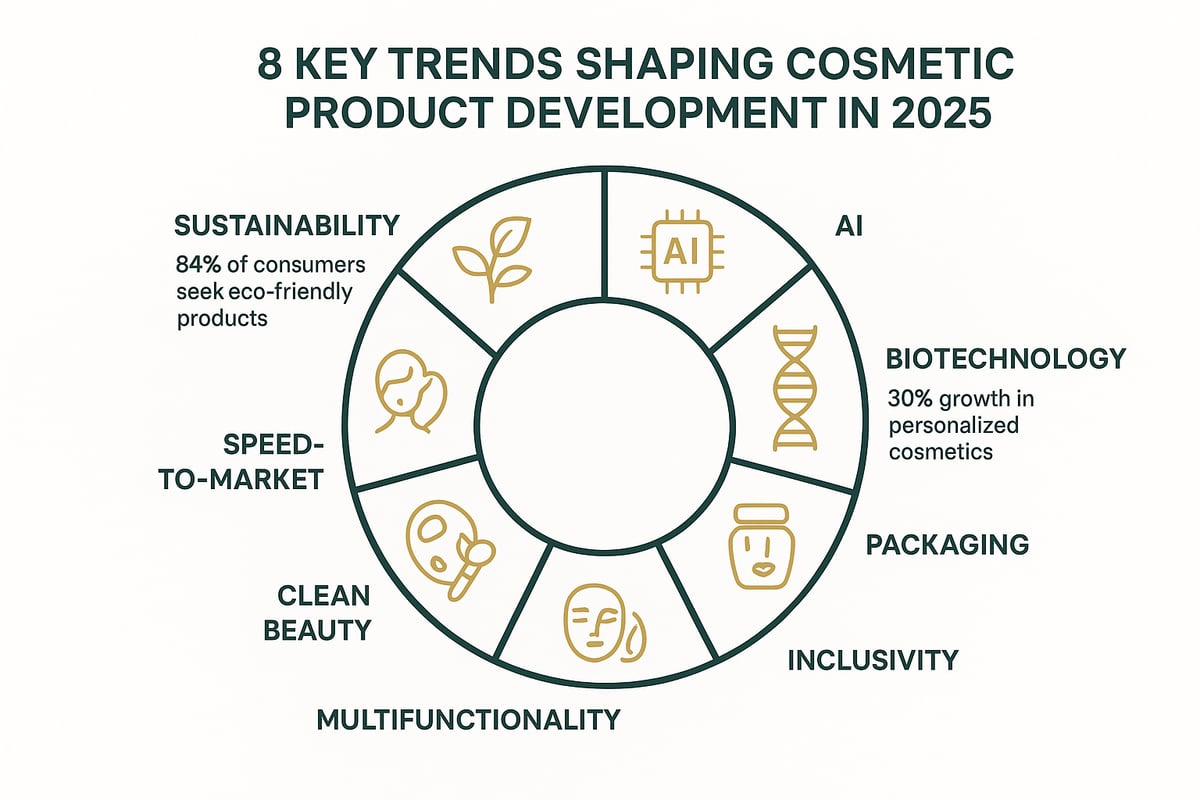
1. Sustainable and Eco-Friendly Formulations
Sustainability is now central to cosmetic product development. Consumers expect brands to prioritize plant-based, biodegradable, and upcycled ingredients. Regulatory bodies are also tightening requirements around sustainability reporting, pushing companies to rethink sourcing and production.
Innovations like waterless, solid, and refillable products are gaining traction. These not only reduce packaging waste but also minimize the carbon footprint throughout the product lifecycle. L’Oréal, for example, has pledged that by 2030, all its formulas will be eco-designed, setting a benchmark for the industry.
Eco-conscious consumers actively seek out brands with visible green initiatives. Data shows that around 40 percent of the market now focuses on healthy skincare, reflecting a shift in purchasing behavior. This trend is impacting ingredient sourcing, manufacturing processes, and especially packaging, where mono-materials and minimal designs make recycling easier.
Below is a summary of sustainable approaches in modern cosmetic product development:
| Sustainability Focus | Example Approach | Industry Impact |
|---|---|---|
| Plant-based ingredients | Use of botanicals, algae | Reduced reliance on synthetics |
| Biodegradable packaging | Mono-material tubes, jars | Easier recycling, less landfill |
| Upcycled materials | Fruit byproducts in scrubs | Waste reduction, circularity |
| Waterless formats | Solid bars, powders | Lower water usage, lighter ship. |
Sustainability is no longer optional. Brands integrating eco-friendly practices into cosmetic product development are positioned for long-term growth and consumer loyalty.
2. Advanced Biotechnology and Green Chemistry
Biotechnology is revolutionizing cosmetic product development by enabling the creation of lab-grown actives, peptides, and microbiome-friendly ingredients. These innovations offer enhanced safety, performance, and sustainability compared to traditional ingredients.
Fermentation and enzyme technologies are driving novel product textures and improved efficacy. For instance, some brands now use biotech to produce cruelty-free collagen and squalane, eliminating the need for animal or petrochemical sources. This not only addresses ethical concerns but also appeals to a growing segment of conscious consumers.
A key benefit is the reduction of synthetic preservatives, as biotech enables the use of natural alternatives with reliable shelf stability. This shift enhances product differentiation and aligns with regulatory moves toward safer, greener formulations.
Regulatory compliance is critical, as authorities increase scrutiny of novel ingredients and production methods. Transparent communication about biotech processes is essential for building consumer trust in cosmetic product development.
Biotechnology empowers brands to innovate responsibly, setting new standards for safety, efficacy, and environmental stewardship in cosmetic product development.
3. AI, Data, and Personalization in Product Development
Artificial intelligence is transforming cosmetic product development by optimizing formulations, forecasting trends, and personalizing consumer experiences. AI-powered tools analyze vast datasets to predict ingredient performance and consumer preferences, enabling brands to create products with greater speed and precision.
Big data analytics help companies anticipate shifts in demand and identify emerging trends. Personalized product recommendations, delivered through digital platforms, are now a standard expectation for many shoppers. For example, AI-driven skin analysis tools can suggest tailored regimens based on individual needs and lifestyle factors.
This data-driven approach reduces development time and increases the likelihood of product-market fit. However, it also raises challenges around data privacy and ethical use of personal information. Brands must ensure compliance with regulations and maintain transparent data practices.
Integrating AI and data analytics into cosmetic product development unlocks new levels of innovation, efficiency, and customer satisfaction.
4. Inclusive Beauty and Expanding Shade Ranges
Inclusivity is reshaping cosmetic product development, with brands expanding shade ranges and product types to serve diverse skin tones, hair textures, and gender identities. The movement toward inclusive beauty is driven by consumer advocacy and the influence of social media communities.
Brands face formulation challenges in creating broad color spectrums that deliver consistent texture and performance. Leading companies now collaborate with community influencers to co-create products that authentically represent different groups. This has led to a surge in foundation and concealer shades, as well as gender-neutral and male grooming lines.
Regulatory requirements for global distribution also play a role, as products must meet the needs of varied markets. By prioritizing inclusivity in cosmetic product development, brands foster loyalty and expand their reach.
Inclusivity is not just a trend but an essential strategy for staying relevant and competitive in the evolving beauty landscape.
5. Next-Generation Packaging: Smart, Sustainable, and Sensor-Enabled
Packaging innovation is at the forefront of cosmetic product development. Brands are embracing biodegradable, refillable, and minimal designs to reduce environmental impact and meet consumer expectations.
Smart packaging technologies, such as QR codes and NFC tags, provide ingredient and sourcing transparency. Sensor-enabled containers track product freshness and usage, enhancing the consumer experience. Brands adopting mono-material packaging make recycling more accessible and convenient.
Interactive packaging also serves as an educational tool, guiding consumers on product use and sustainability practices. Reducing packaging waste in the supply chain is now a key performance indicator for many companies.
Packaging is no longer just a protective shell; it is a strategic asset in cosmetic product development, driving engagement, trust, and environmental responsibility.
6. Clean Beauty, Transparency, and Regulatory Compliance
The clean beauty movement is influencing every aspect of cosmetic product development. Consumers demand products free from certain chemicals, with transparent labeling and third-party certifications like EWG and COSMOS.
Brands now disclose full ingredient lists and use blockchain for traceability, ensuring authenticity and safety. Enhanced safety and quality testing protocols are standard, including rigorous microbiological and allergenicity assessments.
Navigating global regulations is complex but essential. Compliance with standards in the EU, US, and APAC regions requires documentation and ongoing monitoring. Transparency builds consumer trust, while robust compliance safeguards brand reputation.
For a comprehensive analysis of the driving forces and market shifts in this space, see the Trends Shaping the Cosmetic Skin Care Industry 2025-2030 report, which outlines key developments and projections for cosmetic product development.
Clean beauty is now a baseline expectation, making transparency and compliance fundamental in cosmetic product development.
7. Hybrid and Multifunctional Products
Hybrid products are blurring the lines between skincare, makeup, and wellness. These multifunctional innovations offer time-saving benefits and appeal to health-conscious consumers seeking simplicity without sacrificing efficacy.
Formulating hybrid products requires balancing stability, performance, and regulatory claims. Popular examples include BB and CC creams that combine coverage with skincare benefits, SPF foundations, and probiotic facial mists.
Multifunctional solutions are especially attractive to busy professionals and travelers who want streamlined routines. Brands that excel in this area differentiate themselves in a crowded market, delivering value and convenience through smart cosmetic product development.
Hybrid products reflect a broader trend toward holistic beauty, where wellness, care, and aesthetics converge in a single, effective solution.
8. Speed-to-Market and Agile Development
In 2025, speed is a competitive advantage in cosmetic product development. Brands are adopting digital product lifecycle management (PLM) systems, virtual labs, and digital twins to accelerate R&D and streamline prototyping.
Cross-functional collaboration between marketing, R&D, and compliance teams supports rapid iteration and testing. Leading companies use virtual labs and simulation tools to refine formulas before physical production, shortening development cycles significantly.
Flexibility is essential to respond to emerging trends and shifting consumer preferences. However, speed must be balanced with rigorous safety and quality assurance to protect brand integrity.
Agile development processes allow brands to quickly bring new products to market, adapt to feedback, and stay ahead in the fast-paced world of cosmetic product development.
Technology and Digital Transformation in Cosmetic Product Development
Cosmetic product development is undergoing a rapid evolution as digital transformation reshapes how brands innovate, collaborate, and launch new products. From R&D labs to consumer touchpoints, the latest technology is streamlining every step of the process. Embracing these advancements is no longer an option but a necessity for staying competitive in 2025.
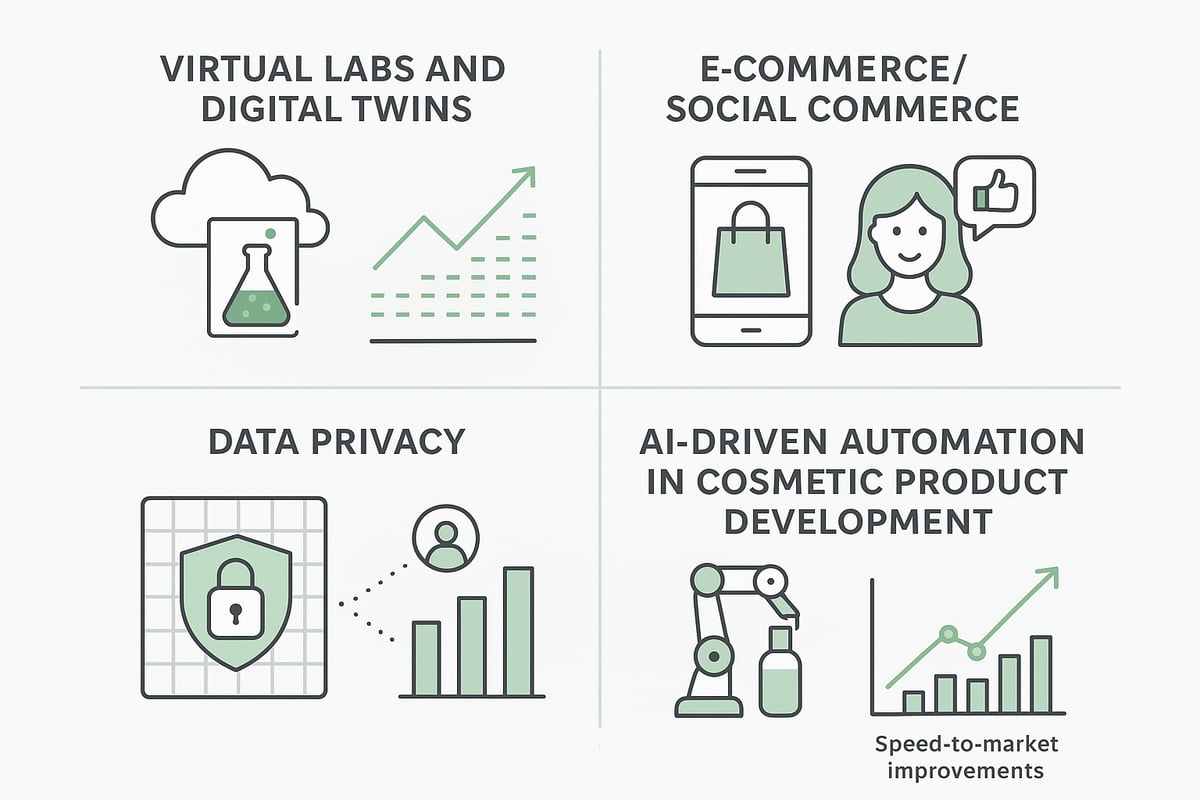
Digital Tools Accelerating Innovation
Digital tools are revolutionizing cosmetic product development by enabling faster innovation and improved cross-team collaboration. Virtual labs and digital twins allow R&D teams to test ingredient interactions and product stability in a simulated environment, reducing the need for physical prototypes.
Cloud-based product lifecycle management (PLM) systems centralize data, making it easier for global teams to share insights and accelerate project timelines. Simulation software helps identify potential issues early, supporting both safety and efficacy.
Brands leveraging these digital solutions achieve shorter development cycles and more efficient resource allocation. For a deeper dive into how digital innovation is transforming the industry, see Beauty and Cosmetic Industry Trends 2025.
E-Commerce, Social Commerce, and Direct-to-Consumer Models
The rise of e-commerce and social commerce is redefining cosmetic product development strategies. Online platforms give brands direct access to consumers, enabling rapid feedback and agile product iteration.
Social listening tools monitor conversations across platforms like TikTok and Instagram. These insights inform real-time adjustments in formulas, packaging, and marketing. Viral trends can trigger fast-track launches, keeping brands ahead of the curve.
Direct-to-consumer models streamline distribution, allowing for personalized experiences and data-driven decision-making. This digital-first approach helps brands respond quickly to market demands and changing consumer preferences.
Data Security and Consumer Privacy
With increased reliance on digital platforms for cosmetic product development, managing sensitive user data is a top priority. Brands must comply with regulations such as GDPR and CCPA to protect consumer information during personalization and testing.
Transparent data practices foster trust and encourage customer engagement. Secure systems are essential for storing skin analysis results, purchase history, and feedback. Regular audits help identify vulnerabilities and ensure ongoing compliance.
Prioritizing privacy not only reduces legal risks but also strengthens brand reputation. Consumers are more likely to share data with brands that demonstrate a commitment to security and ethical practices.
Future Outlook: The Role of AI and Automation
Looking forward, artificial intelligence and automation are set to further transform cosmetic product development. Predictive analytics will help brands anticipate trends, optimize inventory, and plan launches with greater accuracy.
Automation in manufacturing and quality control speeds up production while maintaining high standards. Digital platforms will enable seamless integration of R&D, marketing, and supply chain operations.
Preparing for this next wave of digital disruption is crucial. Brands that invest in these technologies will lead the way in innovation, efficiency, and customer satisfaction in 2025 and beyond.
Safety, Quality, and Risk Management in 2025 Cosmetic Development
Safety, quality, and risk management are essential pillars in cosmetic product development as brands navigate a rapidly evolving regulatory and consumer landscape. Companies must now adopt more rigorous approaches to ensure products are not only innovative but also safe, compliant, and trusted by consumers.
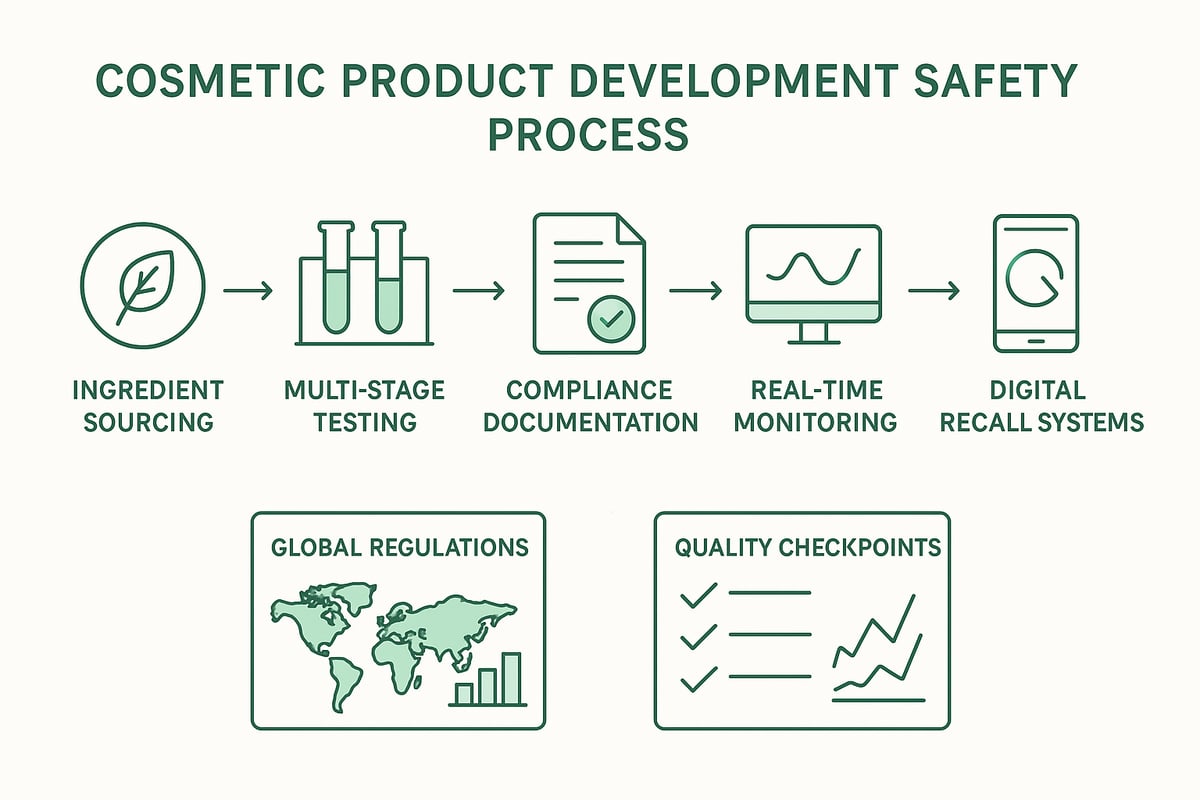
Enhanced Safety Protocols and Testing
Modern cosmetic product development relies on comprehensive safety protocols throughout every phase. Companies implement multi-stage safety and efficacy testing, beginning in research and development and continuing through production and post-market surveillance.
Key safety strategies include:
- Utilizing scientific visualization tools for risk assessment
- Accessing ingredient databases to identify potential hazards
- Conducting real-time monitoring during manufacturing
For a deeper look at key safety steps, see Steps to formulate safe cosmetics. These practices not only protect consumers but also build trust and credibility for brands.
Regulatory Compliance Across Global Markets
Global cosmetic product development must address complex and varying regulations across regions such as the EU, US, and APAC. Brands are required to maintain detailed documentation, including Product Information Files (PIF), Safety Data Sheets, and Cosmetic Notification Forms.
Automated compliance monitoring and reporting systems are increasingly used to keep pace with changing rules and reduce human error. Staying compliant not only avoids costly recalls but also ensures smooth market entry in new regions. Effective compliance strategies are fundamental for long-term brand success in a competitive global market.
Quality Assurance and Consumer Protection
Quality assurance in cosmetic product development covers every step, from sourcing raw materials to final packaging. Brands implement stringent quality control checks to prevent contamination or adulteration, using real-time monitoring systems for early detection.
Third-party certifications further enhance brand credibility and consumer protection. For more on this, read about the importance of quality formulations. Consistent quality helps foster consumer loyalty and supports positive brand reputation.
Crisis Management and Product Recall Strategies
Proactive risk management is critical in cosmetic product development to minimize the likelihood of safety incidents. Brands use simulation tools to identify and address risks during new product development.
Digital recall management systems allow for swift, efficient action if a product issue arises. Having a robust crisis plan in place demonstrates responsibility and protects both consumers and brand equity. Early detection and rapid response can make the difference in maintaining trust during challenging situations.
Market Entry, Brand Strategy, and Competitive Differentiation
Positioning for Success in a Crowded Market
Entering the beauty space in 2025 demands more than a great formula. Brands must define a unique value proposition to stand out in cosmetic product development. This often means leveraging innovation, sustainability, or inclusivity to build a compelling story.
Emerging indie brands are disrupting traditional players by:
- Prioritizing niche audiences
- Rapidly adopting new technologies
- Responding quickly to evolving trends
According to the GCI Trends Report April 2025, brands that align with consumer values and market shifts are gaining significant traction. Clear differentiation is now essential for lasting success.
Building Consumer Trust and Loyalty
Trust is the cornerstone of brand growth in cosmetic product development. Transparent communication, ethical ingredient sourcing, and consistent product quality are now baseline expectations for consumers.
Brands foster loyalty by:
- Sharing detailed sourcing and sustainability practices
- Engaging consumers with user-generated content and social proof
- Collaborating with influencers to amplify authentic experiences
Consumers increasingly reward brands that demonstrate commitment to both sustainability and inclusivity. Building trust also means responding to feedback swiftly and maintaining open dialogue across digital platforms.
Go-to-Market Strategies and Global Expansion
Effective go-to-market strategies in cosmetic product development require a nuanced understanding of regional preferences and regulatory environments. Brands must localize products and marketing for diverse markets, often through strategic partnerships or licensing agreements.
For instance, cross-border e-commerce and tailored campaigns help brands reach new audiences quickly. As highlighted in The Future of the Beauty Industry in 2025 and Beyond, agile adaptation to local trends is critical for scaling globally. Successful expansion depends on balancing global consistency with local relevance.
Measuring Success: KPIs and Analytics
Continuous improvement in cosmetic product development relies on clear metrics and agile analytics. Brands track product performance, consumer sentiment, and trend adoption using advanced data tools.
Key KPIs include:
| Metric | Purpose |
|---|---|
| Sales Growth | Measures market traction |
| Repeat Purchase Rate | Indicates consumer loyalty |
| Social Media Engagement | Tracks brand resonance |
| Time-to-Market | Assesses development efficiency |
Analyzing these metrics enables brands to refine strategies and respond proactively to market signals, ensuring they remain ahead in a competitive landscape.
As we’ve explored, staying ahead in the ever-evolving cosmetics industry means truly understanding new consumer demands, embracing sustainable innovation, and leveraging smart technology for personalized, high-performance products. Whether you’re just starting out or looking to elevate your established brand, you don’t have to navigate these trends alone. At The INCI Lab, we’re passionate about helping you turn future-focused ideas into standout formulations with full support every step of the way. Ready to transform your insights into action Let’s take the first step together—Start Your Product Journey.


